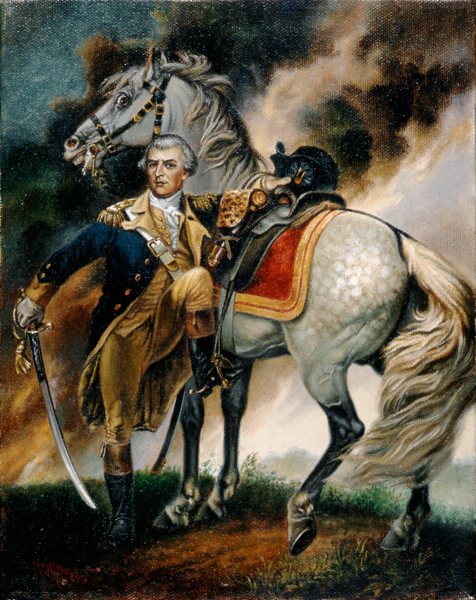By Werner Willis

Open Edition Paper 8″ X 10″
Major General Nathanael Greene
“The Fighting Quaker”
General Nathanael Greene is widely regarded as second only to George Washington as the most capable American general of America’s war for independence. Green proved himself as both an effective organizer and consummate strategist in liberating the Southern colonies from British occupation. Despite the fact that he suffered three tactical defeats, Greene’s tenacity was best summed up when he wrote, “We fight, get beat, rise and fight again.”
Born in Rhode Island on August 7, 1742, Greene was raised as a pacifist Quaker. As a young man, he worked as a blacksmith and ironworker in his father’s shop. In spite of his husky frame and robust appearance resulting from years of physical work, Greene was plagued by asthma, a stiff right knee which caused him to limp, and a right eye that was often beset with severe pain.
Congress and General Washington sent Greene to take command of the Southern army after Haratio Gate’s disastrous defeat at Camden, South Carolina. A stickler for military protocol, Green assumed command in a formal ceremony at the Mecklenburg courthouse in Charlotte, North Carolina, on December 3, 1780.
Greene led Cornwallis and his army on a frustrating chase across the Carolinas. Following a victory at Cowpen’s, South Carolina, he outran the British by crossing the swollen Dan River into Virginia leaving Cornwallis and the British army beached on the Carolina side.
Moving back into the Carolinas, the “Fighting Quaker” let Cornwallis attack him at Guilford Courthouse on March 15. Other engagements followed at Hobkirk’s Hill, Ninety Six, and Eutaw Springs. British control of the South was now limited to Savannah and Charleston which were finally abandoned in 1782 long after Cornwallis’ surrender at Yorktown, Virginia.
Portrait of Greene taken from the original painting by C. W. Peale